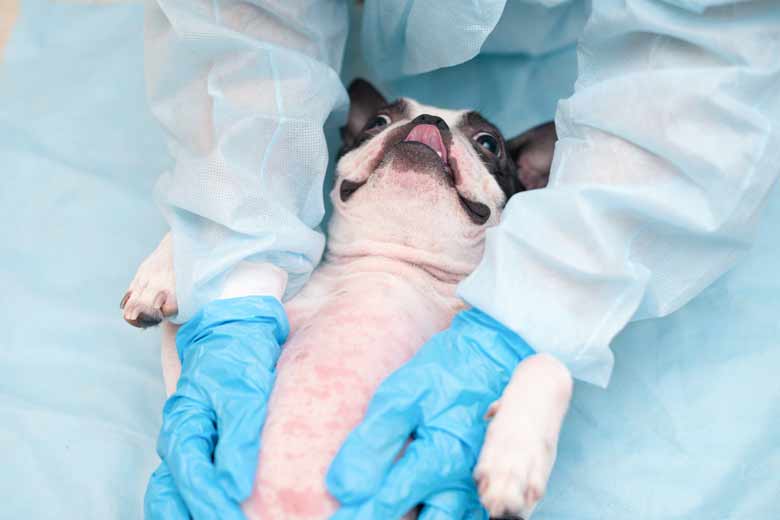
Infected animals develop a rash and hair loss particularly in areas such as the eyes, elbows, hocks, abdomen and ear flaps. Often yellow crusts also form on these areas of the body. A deep bacterial skin infection can develop with long term infections.
Diagnosis is made by skin scrapings or response to treatment. A skin scraping involves using a blade to scrape the surface of the skin, then looking at the debris collected under a microscope. Skin scrapings are always performed, however mites live deep in the skin and can be extremely difficult to find. If a skin scraping is negative but Sarcoptic mange is suspected, medication will be used and the diagnosis based upon the response to treatment.
All in-contact dogs should be treated, even those with no clinical signs because it can take up to one month for an asymptomatic carrier to show any signs.
The treatment of Sarcoptes is chemical control of the mite. Some severely affected dogs also need antibiotics, anti-inflammatories and/or medicated shampoo. Response to treatment should be seen within 2 weeks. Dogs that are at high risk for becoming infected with Sarcoptes, eg those that live in areas where foxes live, should stay on a preventative permanently.
Sarcoptes can be transmitted to people in close contact with an affected dog. An itchy rash may develop on the arms, chest or stomach area. This rash is usually transient and should resolve after the affected dog(s) is treated, however we always recommend you seek medical advice if you appear to be affected.